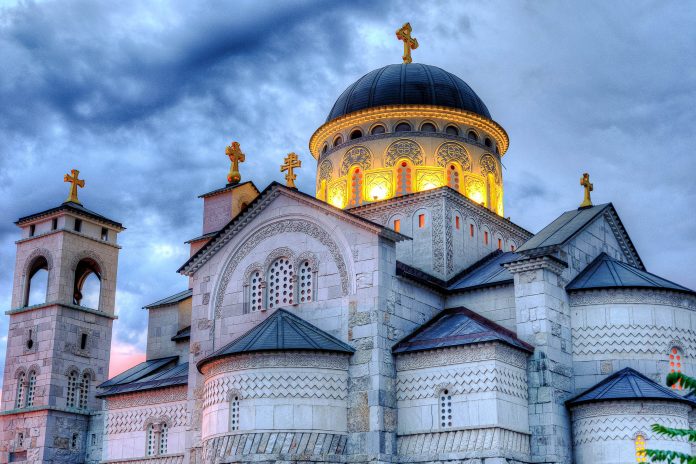Die montenegrinische Hauptstadt Podgorica wurde nach dem Zweiten Weltkrieg komplett neu aufgebaut und enthält zum Großteil neue Gebäude. Dennoch ist in der geschichtsträchtigen Stadt das eine oder andere historische Kleinod zu finden.
Podgorica, die offizielle Hauptstadt Montenegros, ist eigentlich keine klassische Touristenstadt, sondern spielt bei den meisten Urlaubern nur eine verkehrstechnische Rolle. Dennoch lohnt sich ein Abstecher in diese geschichtsträchtige Stadt, die die kulturhistorischen Hintergründe des Landes enthüllt.
Montenegros Hauptstadt ist keine Schönheit und doch verstehen es seine Bewohner, ihrer Stadt eine liebenswerte Freundlichkeit zu verleihen. Am Abend ist einiges los in den Straßen und Lokalen von Podgorica und erst auf den zweiten Blick erkennt man in den Wellblechsiedlungen die Armut der Stadt.
Zu erreichen ist Podgorica völlig problemlos sowohl mit Auto, Zug und Flugzeug, der internationale Flughafen ist etwa 10km von Podgorica entfernt.
Tipp: Im stickigen Talkessel von Podgorica muss man bereits ab dem späten Frühling mit Temperaturen jenseits der 40-Grad-Marke rechnen. Städtebummler sollten sich auf Hitze einstellen – oder ihren Besuch in die Nebensaison legen.
Inhaltsverzeichnis
Ausgrabungsstätte Dioclea (Duklija)
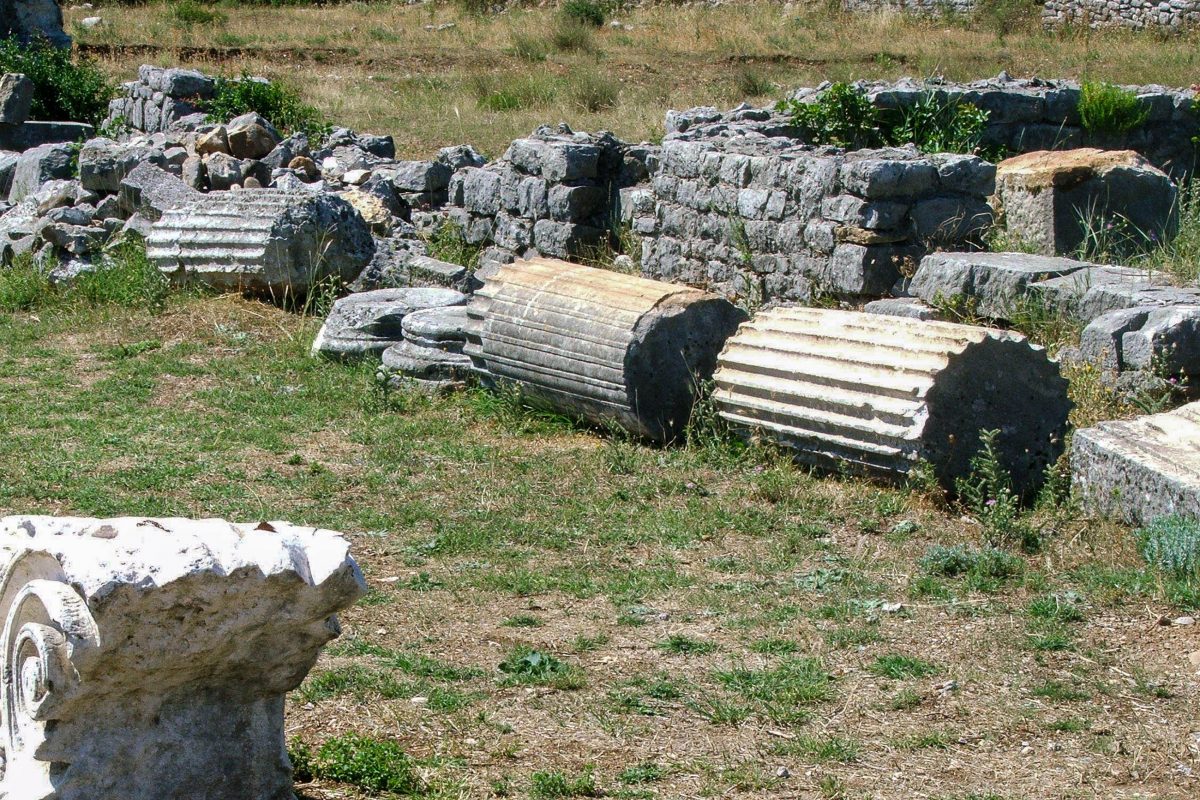
Die wohl interessanteste Sehenswürdigkeit ist die Vergangenheit Podgoricas. In den Ruinen von Dioclea kann noch heute frei zugänglich römische Vergangenheit geschnuppert werden. Die altrömische Stadt Duklija, auch unter der Bezeichnung Duklja oder Dioclea bekannt, war einst Hauptstadt des Reiches Zeta, Vorläufer-Staat von Montenegro.
Duklija wurde im ersten Jahrhundert vor Christus gegründet und war einst die größte Siedlung des illyrischen Stammes der Dokläer. Die Stadt gedieh auch unter den Römern. Vermutlich war es Kaiser Vespasian im späten ersten Jahrhundert nach Christus, der Duklija zur Stadt ausrief.
Im angenehmen Klima, aufgrund der geografischen Lage gut zu verteidigen und wirtschaftlich erfolgreich, zählte Duklija bald an die 10.000 Einwohner. Nachdem die Römer ihr Reich aufteilten wurde Duklija Provinzhauptstadt von Dalmatien und später von Prevalitania.
Im 5. Jahrhundert waren die Tage von Duklija jedoch langsam gezählt. Nach dem Zerfall des Römischen Reiches verfiel auch Duklija, wurde mehrmals von Barbaren geplündert und von Erdbeben erschüttert. Im Jahr 620 fielen die Slawen in Duklija ein, worauf die Stadt fluchtartig von ihren Bewohnern verlassen wurde.
Die Slawen bauten Duklija wieder auf, im 10. Jahrhundert erfolgte jedoch die erneute Zerstörung durch Türken und Albaner.
Wie kommt man nach Dioclea?
Die auch Duklija genannten Ruinen liegen etwa 3 Kilometer nördlich der Stadt. Von Podgorica nach Danilovgrad überquert man die Zeta gleich bei der ersten Brücke und hält sich am anderen Ufer rechts. Eine enge Straße führt anschließend über Eisenbahnschienen bis zu einem Bahndamm, hinter dem die Überreste von Duklija auftauchen, die völlig kostenlos zugänglich sind.
Die Umrisse der einstigen Stadt sind allerdings nur mehr zu erahnen, denn die Säulenreste, Kapitelle und niedrigen Steinmauern von Dioclea sind scheinbar willkürlich über die Wiese verstreut. Lediglich Teile der östlichen Stadtmauer sind noch an ihrem ursprünglichen Ort zu finden.
Es gibt auch kein Besucherzentrum oder Erläuterungen bei den einzelnen Ruinen. Dafür kann man meist ganz allein mit Schildkröten und Eidechsen römische Vergangenheit schnuppern.
Museum und Galerie von Podgorica
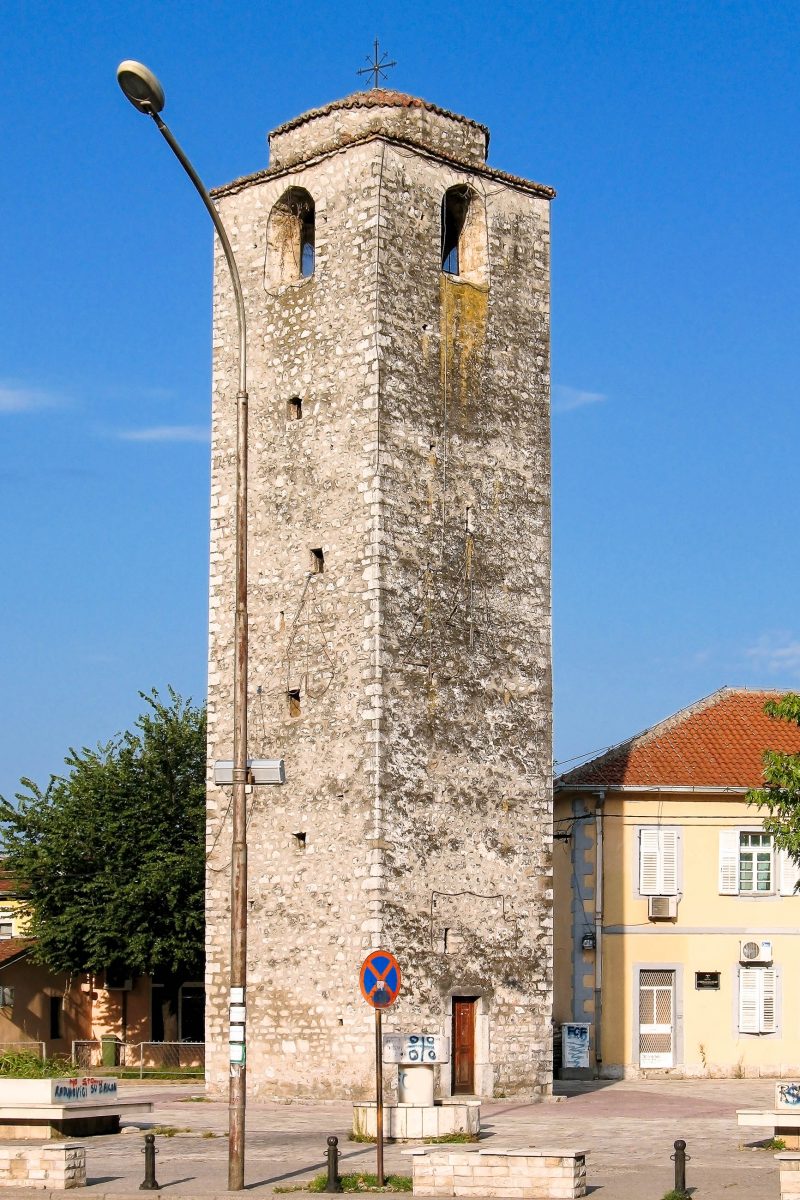
Das „Muzej i Galerije Podgorice“ ist als Ergänzung zum Besuch der Ruinenstätte Dioclea empfehlenswert. Viele Fundstücke der antiken römischen Stadt sind hier ausgestellt und erläutert.
Darüber hinaus gibt es eine Abteilung für allgemeine Geschichte und eine sehenswerte Galerie, in der hauptsächlich spektakuläre Werke von Nikola Vujošević zu sehen sind.
Hristovog Vaskrsenja
Die serbisch-orthodoxe Auferstehungskathedrale ist das architektonische Prunkstück von Podgorica und eines der jüngsten Wahrzeichen der Stadt. Das imposante Gotteshaus wurde von 1993 bis 1999 errichtet und dominiert seither mit ihrer 34m hohen Kuppel das Stadtbild von Podgorica.
Millennium-Brücke und Moskauer Brücke
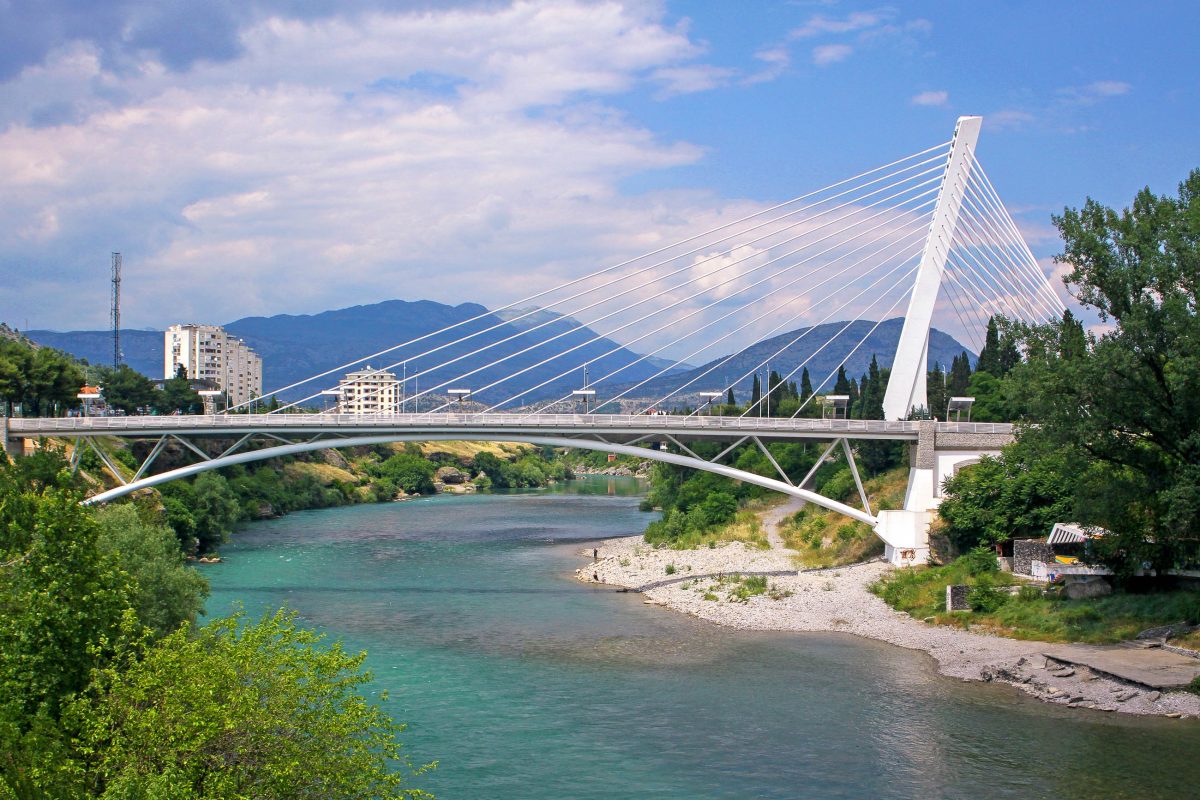
Die Millennium-Brücke wurde im Jahr 2005 am 13. Juli, dem Nationalfeiertag Montenegros, eröffnet und führt seither auf einer Länge von 160 Metern über die Morača. Die markante Schrägseilbrücke kostete 7 Millionen Euro und gilt als Wahrzeichen und Symbol des Aufschwungs in Podgorica. Die vierspurige Brücke ist sowohl für Fußgänger als auch für den Autoverkehr gedacht und erhebt sich bis zu einer Höhe von 57 Metern.
Gleich unterhalb der Millennium-Brücke führt die Moskauer-Brücke über die Morača, die ausschließlich Fußgängern vorbehalten ist. Sie wurde am 19. Dezember 2008 eröffnet und erhielt ihren Namen, weil die Metallkonstruktion der Brücke ein Geschenk der Stadt Moskau war.
Toranj na Dajbabskoj Gori
Der auch nach dem gleichnamigen Hügel „Dabjabska Gora-Trum“ genannte Sendeturm ist ein weiteres Wahrzeichen von Podgorica. Das 6 Millionen Euro teure Bauwerk wurde 2011 nach dreijähriger Bauzeit eröffnet und erreicht eine Höhe von 55 Metern. Seine Aussichtsplattform bietet einen optimalen Rundblick über die Stadt und in der Nacht aufgrund ihrer Beleuchtung ein beliebtes Fotomotiv.
Crkva Sveti Đorđa
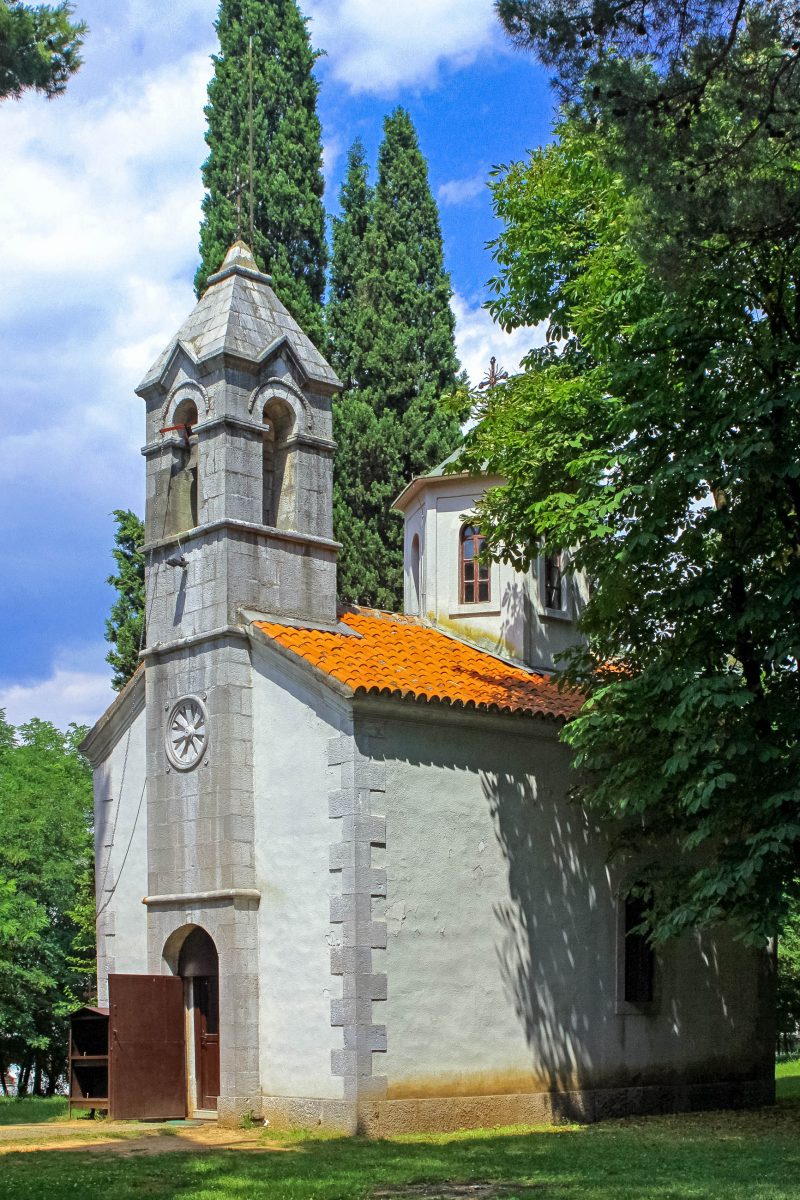
Die unauffällige Kirche des Hl. Georg am Fuß des Hügels Gorica stammt aus der Zeit um 1000 nach Christus und ist eines der ältesten Bauwerke der Stadt. Die Fresken in ihrem Inneren stammen aus dem 16. Jahrhundert, zuletzt restauriert wurde sie in den 1960er-Jahren.
Königspalast – Kunstmuseum
Das Stadtschloss von König Nikola liegt inmitten einer großzügigen Parklandschaft am Ufer der Morača. Gleich daneben befindet sich das „Perianiči“, das Hauptquartier der königlichen Leibwache.
Die Königsfamilie war allerdings nur im Winter in Podgorica, in den heißen Sommermonaten bevorzugten sie das kühle Cetinje oder die angenehme Küstenstadt Bar. In der sozialistischen Zeit diente der Winterpalast Nikolas als Bettenhaus für die benachbarte Klinik. Seit 1984 beherbergt das Schloss das Museum für zeitgenössische Kunst des Landes.
Geschichte von Podgorica
Podgorica, die Stadt „unter dem Hügel“, wurde von den Illyrern alsbald für ihre fruchtbare Umgebung geschätzt. Gelegen an den fünf Flüssen Ribnica, Morača, Zeta, Sitnica und Cijevna war die Wasserversorgung der Hochebene das ganze Jahr über gewährleistet und die Böden waren fruchtbar.
Die erste Siedlung wurde vom illyrischen Stamm der Dokläer errichtet, im Jahr 168 vor Christus übernahmen diese die Römer und gaben ihr und der gesamten Region den Namen „Dioclea“. Die Überreste dieser römischen Siedlung sind heute noch einige Kilometer nördlich von Podgorica zu besichtigen.
Nach dem Niedergang des weströmischen Reiches im 5. Jahrhundert ging Podgorica, damals „Ribnica“ durch vielerlei Hände, von den Slawen über die Türken bis hin zu Montenegro im Jahr 1878.
Die damalige Hauptstadt Cetinje, wo die Petrović-Familie herrschte, wurde zunehmend vom verkehrstechnisch um einiges günstiger gelegenen Podgorica verdrängt. Nach dem ersten Weltkrieg war es amtlich: Podgorica wurde Hauptstadt Montenegros.
Im Zweiten Weltkrieg wurde Podgorica durch sage und schreibe 71 Bombardements der Deutschen Luftwaffe bis auf die Grundmauern zerstört. Unter Tito wurde sie völlig neu strukturiert und wieder aufgebaut.
Der damalige Herrscher legte allerdings auf Ästhetik nicht sehr viel Wert und so reihte sich im damaligen Titograd ein Plattenbau neben dem anderen und auch die Innenstadt wird eher von funktionalen denn repräsentativen Bauten geprägt. Trotzdem ist Podgorica keine Betonwüste, sondern relativ grün. 1992 verschwand Tito und mit ihm der Name der Stadt, sie hieß fortan wieder Podgorica.
Weiterführende Links:

